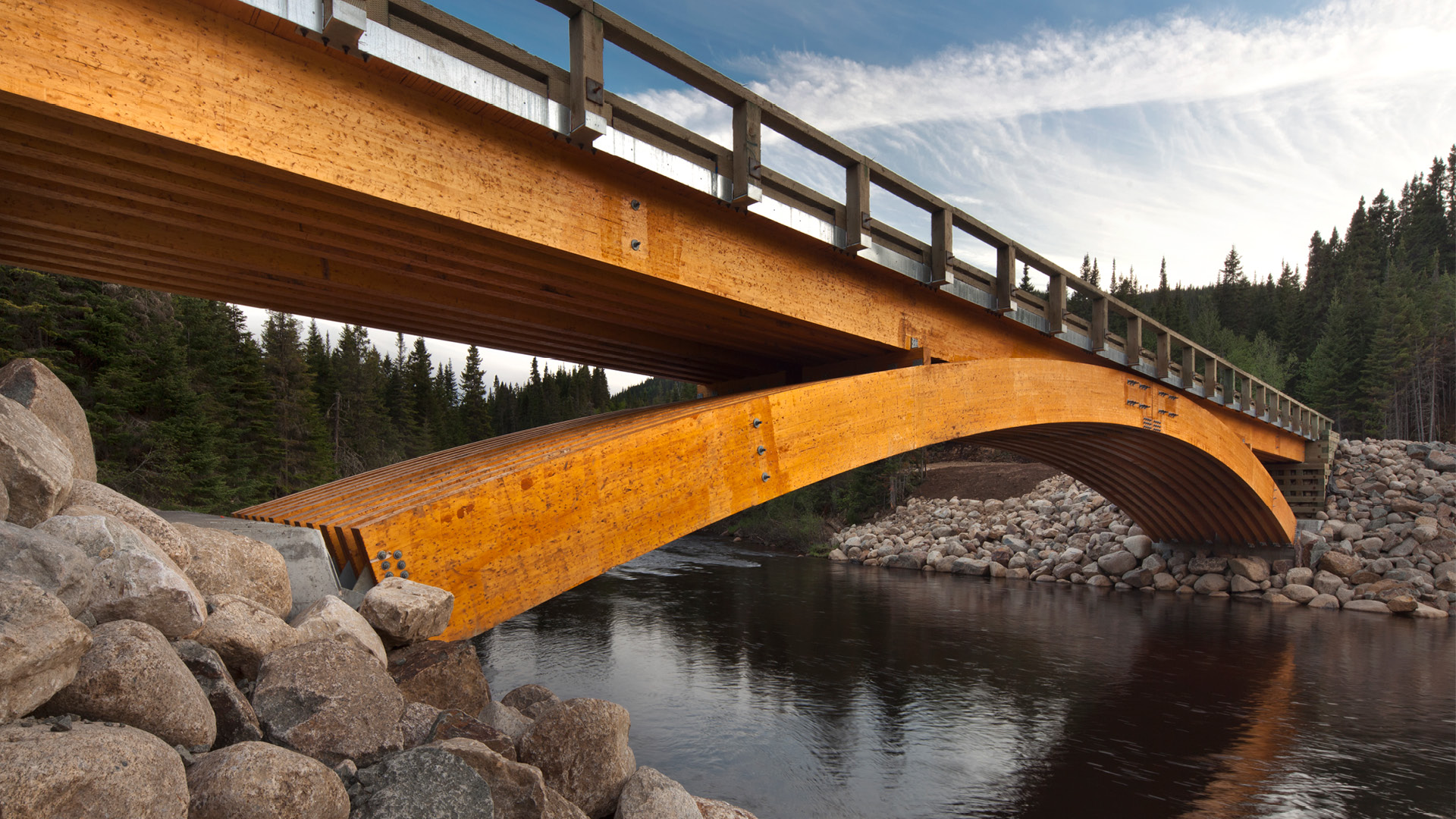Mass timber bridges
Bringing nature into infrastructure
Wooden bridges: culture and tradition
Timber bridges are culturally significant structures that have a long tradition, with many pre-1950s bridges still in use today. Wood also has a long history as a prized material for artistic works.
Recent advances in mass timber technology and expertise mean that the material is better able than ever before to meet modern sustainable infrastructure needs. Used with beneficial new practices, mass timber provides optimal effectiveness at each stage of a bridge’s life cycle, from design to construction to maintenance, all the way to the bridge’s decommissioning.

The advantages of mass timber bridges
- Delivery times reduced due to local sourcing, regional processing and integrated design and manufacturing
- Members and systems sized to the nearest millimetre with state-of-the-art manufacturing technology
- Members available in very large sizes (up to 654 mm in width, 2,400 mm in height and 45 m in length)
- Project duration significantly reduced due to very fast erection and installation times, with no need for heavy equipment
- Maintenance is simple and requires only a small time commitment
- Self-weight substantially reduced
- Material is non-corrosive and extremely fatigue-resistant
- Beautiful structures with cultural significance and numerous environmental benefits
- Proven durability
- Solutions are cost-effective and competitively priced


The scandinavian model: a shining example
Scandinavia experiences tough weather conditions much like those in North America. Some years ago, the region made the bold decision to build a major part of its road infrastructure using mass timber. Scandinavia’s timber bridges are built to last 100 years (versus 75 in Canada) with the same load capacity as under Canada’s building code. The endeavour has been a resounding success.
Scandinavia’s approach has had number of positive effects. In some cases, using wooden decks has allowed engineers to reduce a bridge’s self-weight and increase its capacity. Certain specialists even predict that the wooden components in some of these structures, which were built to last 100 years, could have a 500-year service life due to highly effective design (FPI, 2014).
With a program and a policy that make wood a priority, these countries have been developing and building modern timber bridges for some time now. Increasingly present on Scandinavia’s road networks, these structures will be an asset to the region for years to come.